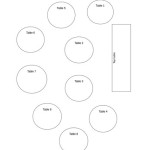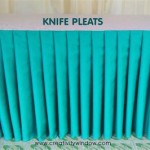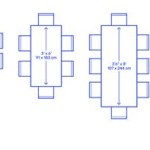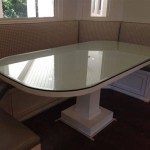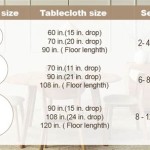How To Hang Paintable Wallpaper Over Paneling
Paneling, while a common feature in many homes, can sometimes feel dated or simply not align with current aesthetic preferences. Removing paneling can be a time-consuming and often disruptive process, potentially revealing damaged drywall or requiring extensive repairs. A viable alternative to full removal is to hang paintable wallpaper over the paneling. This approach provides a fresh surface for paint, effectively concealing the paneling while avoiding the mess and expense of a more invasive renovation. This article details the steps involved in preparing the paneling, selecting the appropriate wallpaper, and installing it for a seamless, paint-ready finish.
Before embarking on this project, it's crucial to assess the condition of the existing paneling. Look for loose panels, significant damage such as cracks or warping, and any signs of moisture. Addressing these issues before applying wallpaper is essential for achieving a smooth and durable result. Neglecting necessary repairs can lead to the wallpaper failing to adhere properly or developing imperfections over time, ultimately defeating the purpose of the project.
Paintable wallpaper, also known as textured wallpaper or anaglypta, comes in a variety of patterns, from subtle textures to more intricate designs. The choice of pattern is a matter of personal preference, but it is important to consider the overall aesthetic of the room and how the chosen pattern will complement the existing décor and future paint color. Heavier, thicker wallpaper is generally more effective at concealing imperfections in the paneling, while thinner wallpaper may require more extensive surface preparation.
Key Point 1: Preparing the Paneling Surface
Proper surface preparation is paramount for the successful application of paintable wallpaper over paneling. The goal is to create a smooth, clean, and stable surface that will allow the wallpaper to adhere securely and prevent future problems.
The first step is to thoroughly clean the paneling. Use a degreasing cleaner to remove any dirt, grime, grease, or wax buildup. This is particularly important in kitchens or bathrooms where grease and moisture are prevalent. Rinse the paneling with clean water and allow it to dry completely. Any existing gloss or sheen on the paneling should be dulled to provide a better surface for adhesion. This can be achieved by sanding the paneling lightly with a medium-grit sandpaper (around 120-grit). Wipe away any sanding dust with a damp cloth.
Next, address any imperfections in the paneling. Fill any nail holes, cracks, or dents with a paintable wood filler or patching compound. Apply the filler according to the manufacturer's instructions, ensuring that it is flush with the surrounding surface. Allow the filler to dry completely and then sand it smooth. For larger gaps or uneven seams between panels, consider using a flexible caulk to create a seamless surface. Apply the caulk sparingly and smooth it with a wet finger or a caulking tool.
A crucial step is to apply a primer specifically designed for use under wallpaper. This primer serves several important functions: it seals the paneling, provides a good bonding surface for the wallpaper adhesive, and helps to prevent the adhesive from being absorbed into the paneling. Choose a primer that is recommended for use over non-porous surfaces like paneling. Apply the primer evenly with a brush or roller, following the manufacturer's instructions. Allow the primer to dry completely before proceeding to the next step. Some individuals prefer to use a "sizing" product after priming, which further enhances adhesion. Sizing is a diluted wallpaper paste applied to the primed surface.
For paneling with deep grooves or textures, consider applying a skim coat of joint compound over the entire surface. This will create a perfectly smooth surface for the wallpaper. Apply a thin, even layer of joint compound using a wide drywall knife. Allow the compound to dry completely and then sand it smooth. This process may need to be repeated to achieve the desired smoothness. While this adds significant time and effort to the project, it can dramatically improve the final result, particularly with thinner paintable wallpapers.
Key Point 2: Selecting and Applying the Wallpaper
Choosing the correct type of paintable wallpaper and applying it properly is crucial for achieving a professional and long-lasting finish. Consider the weight, texture, and adhesive type of the wallpaper.
Paintable wallpaper is available in various materials, including paper, vinyl, and fiberglass. Paper-based wallpapers are generally the most affordable, but they may be less durable and more susceptible to tearing or moisture damage. Vinyl wallpapers are more durable and easier to clean, making them a good choice for high-traffic areas or bathrooms. Fiberglass wallpapers are the most durable and resistant to moisture and tearing, but they can be more difficult to work with and may require special adhesives. For covering paneling, a thicker, heavier wallpaper is generally recommended, as it will be more effective at concealing imperfections and providing a smoother surface for painting.
Before applying the wallpaper, measure the wall and cut the wallpaper into strips that are slightly longer than the height of the wall. This will allow for trimming at the top and bottom. When cutting multiple strips, be sure to match the pattern of the wallpaper to ensure a seamless look. Apply the wallpaper adhesive to the back of the wallpaper strip, following the manufacturer's instructions. Some wallpapers are pre-pasted and only require wetting to activate the adhesive. Others require the application of a separate adhesive paste. Be sure to use an adhesive that is specifically recommended for use with the type of wallpaper you have chosen and for application over non-porous surfaces like primed paneling.
Fold the wallpaper strip, adhesive side in, to allow the adhesive to soak into the paper. This process, known as "booking," allows the adhesive to evenly saturate the wallpaper and prevents it from drying out too quickly. The booking time will vary depending on the type of wallpaper and adhesive, so follow the manufacturer's instructions. Align the first strip of wallpaper with the top of the wall, leaving a small overlap at the ceiling. Use a wallpaper smoothing brush or a plastic smoother to smooth the wallpaper onto the wall, working from the center outwards. This will remove any air bubbles and ensure good contact between the wallpaper and the wall.
Trim the excess wallpaper at the top and bottom of the wall using a sharp utility knife. Use a straight edge to ensure a clean, straight cut. Overlap the next strip of wallpaper slightly with the first strip, and smooth it into place. Continue this process until the entire wall is covered. Pay close attention to matching the pattern of the wallpaper at the seams. After hanging each strip, use a damp sponge to wipe away any excess adhesive from the surface of the wallpaper.
Key Point 3: Finishing and Painting the Wallpaper
Once the wallpaper is hung, allow it to dry completely before painting. This is crucial to prevent the wallpaper from shrinking or bubbling after painting. The drying time will vary depending on the type of wallpaper and adhesive, as well as the humidity and temperature of the room. Typically, allow at least 24-48 hours for the wallpaper to dry completely.
Before painting, inspect the wallpaper for any imperfections, such as loose seams or air bubbles. Repair any imperfections with wallpaper paste or caulk. Apply a primer specifically designed for use over wallpaper. This will help to seal the wallpaper and provide a good bonding surface for the paint. Choose a primer that is recommended for use with the type of paint you will be using. Apply the primer evenly with a brush or roller, following the manufacturer's instructions. Allow the primer to dry completely before proceeding to the next step.
Select a high-quality paint in your desired color and finish. Latex paints are generally recommended for painting wallpaper, as they are durable and easy to clean. Apply the paint in thin, even coats, using a brush or roller. Avoid applying too much paint, as this can cause the wallpaper to become saturated and peel away from the wall. Allow each coat of paint to dry completely before applying the next coat. Depending on the color and coverage of the paint, two or three coats may be necessary to achieve the desired finish.
Once the paint is dry, inspect the surface for any imperfections, such as drips or brush marks. Touch up any imperfections with a small brush. Finally, clean up any spills or splatters and replace any trim or moldings that were removed during the project. The finished result should be a smooth, seamless surface that completely conceals the paneling and provides a fresh, new look for the room. Consider adding decorative elements, such as artwork or shelving, to further enhance the aesthetic appeal of the room.

Can I Hang Wallpaper Over Wood Panels

Using Paintable Wallpaper To Cover Wood Paneling Super Nova Adventures

Using Paintable Wallpaper To Cover Wood Paneling Super Nova Adventures
Interior Design Is There A Wallpaper I Can Use To Hide Wood Paneling And Make The Wall Look More Like Regular Painted Sheet Rock Quora

Can You Wallpaper Over Wood Paneling 5 Steps Guide

How To Hang Wall Paper Over Wood Paneling 7 Steps With S

Can You Install Wallpaper Over Paneling Apex

Best Paintable Beadboard Wallpaper Better Than Real Bb

Using Paintable Wallpaper To Cover Wood Paneling Super Nova Adventures

How To Hang Wall Paper Over Wood Paneling 7 Steps With S

